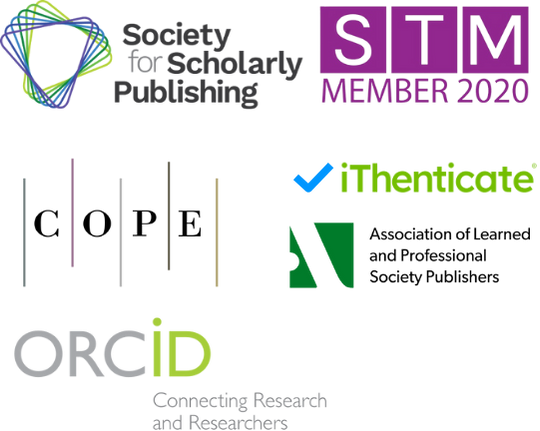Chemical Stabilizers for Prolonged Enzyme Inhibition in Soils: Plant Nutrition and Agricultural Optimization
DOI:
https://doi.org/10.71222/gs3q1e19Keywords:
chemical stabilizers, enzyme inhibition, urease, soil biochemistry, nitrogen managementAbstract
Chemical stabilizers play a crucial role in prolonging enzyme inhibition in soil-plant systems, offering significant potential for optimizing agricultural practices and enhancing plant nutrition management. This review examines the mechanisms and applications of chemical stabilizers in controlling soil enzyme activity, particularly focusing on urease inhibition and its implications for nitrogen management in agricultural systems. The effectiveness of various chemical compounds, including synthetic inhibitors and natural plant extracts, in modulating enzyme activity is analyzed through their impact on soil biochemical processes and nutrient availability. The research demonstrates that chemical stabilizers can effectively extend the duration of enzyme inhibition, leading to improved nitrogen use efficiency and reduced environmental losses. Furthermore, the integration of chemical stabilizers with sustainable agricultural practices shows promise for maintaining soil health while optimizing crop productivity. The findings reveal that coordination polymers and hydroxamic acid derivatives exhibit particularly strong inhibitory effects on urease activity, providing extended control over nitrogen transformation processes. This comprehensive analysis highlights the potential of chemical stabilizers as essential tools for modern precision agriculture, contributing to enhanced food security and environmental sustainability through improved nutrient management strategies.
References
1. F. Ding, C. Hung, J. K. Whalen, L. Wang, Z. Wei, and L. Zhang et al., "Potential of chemical stabilizers to prolong urease inhi-bition in the soil–plant system," J. Plant Nutr. Soil Sci., vol. 185, no. 3, pp. 384–390, 2022, doi: 10.1002/jpln.202100314.
2. P. Kosikowska and Ł. Berlicki, "Urease inhibitors as potential drugs for gastric and urinary tract infections: a patent review," Expert Opin. Ther. Pat., vol. 21, no. 6, pp. 945–957, 2011, doi: 10.1517/13543776.2011.574615.
3. S. Svane, J. J. Sigurdarson, F. Finkenwirth, T. Eitinger, and H. Karring, "Inhibition of Urease Activity by Different Compounds Provides Insight into the Modulation and Association of Bacterial Nickel Import and Ureolysis," Sci. Rep., vol. 10, no. 1, 2020, doi: 10.1038/s41598-020-65107-9.
4. J. Dong, "On Catalytic Kinetics of Enzymes," Processes, vol. 9, no. 2, p. 271, 2021, doi: 10.3390/pr9020271.
5. B. Krajewska, R. van Eldik, and M. Brindell, "Temperature- and pressure-dependent stopped-flow kinetic studies of jack bean urease. Implications for the catalytic mechanism," J. Biol. Inorg. Chem., vol. 17, no. 7, pp. 1123–1134, 2012, doi: 10.1007/s00775-012-0926-8.
6. D. Evstafeva, F. Ilievski, Y. Bao, Z. Luo, B. Abramovic, and S. Kang et al., "Inhibition of urease-mediated ammonia production by 2-octynohydroxamic acid in hepatic encephalopathy," Nat. Commun., vol. 15, no. 1, 2024, doi: 10.1038/s41467-024-46481-8.
7. G. Xie, W. Guo, Z. Fang, Z. Duan, X. Lang, D. Liu, G. Mei, Y. Zhai, X. Sun, and X. Lu, "Dual-metal sites drive tandem electro-catalytic CO₂ to C₂⁺ products," Angew. Chem., vol. 136, no. 47, p. e202412568, 2024, doi: 10.1002/ange.202412568.
8. F. Ding, C. Ma, W.-L. Duan, and J. Luan, "Second auxiliary ligand induced two coppor-based coordination polymers and urease inhibition activity," J. Solid State Chem., vol. 331, pp. 124537–124537, 2023, doi: 10.1016/j.jssc.2023.124537.
9. J. Gerke, "The Central Role of Soil Organic Matter in Soil Fertility and Carbon Storage," Soil Syst., vol. 6, no. 2, p. 33, 2022, doi: 10.3390/soilsystems6020033.
10. Y. Song, X. Zhang, Z. Xiao, Y. Wang, P. Yi, M. Huang, and L. Zhang, “Coupled amorphous NiFeP/cystalline Ni3S2 nanosheets enables accelerated reaction kinetics for high current density seawater electrolysis,” Appl. Catal. B: Environ. Energy, vol. 352, p. 124028, 2024, doi: 10.1016/j.apcatb.2024.124028.
11. F. Ding, N. Su, C. Ma, B. Li, W.-L. Duan, and J. Luan, "Fabrication of two novel two-dimensional copper-based coordination polymers regulated by the 'V'-shaped second auxiliary ligands as high-efficiency urease inhibitors," Inorg. Chem. Commun., vol. 170, p. 113319, 2024, doi: 10.1016/j.inoche.2024.113319.
12. R. G. Burns, J. L. DeForest, J. Marxsen, R. L. Sinsabaugh, M. E. Stromberger, and M. D. Wallenstein et al., "Soil enzymes in a changing environment: Current knowledge and future directions," Soil Biol. Biochem., vol. 58, pp. 216–234, 2013, doi: 10.1016/j.soilbio.2012.11.009.
13. M. A. Rana, R. Mahmood, and S. Ali, "Soil urease inhibition by various plant extracts," PLOS ONE, vol. 16, no. 10, 2021, doi: 10.1371/journal.pone.0258568.
14. A. V. Teslya, A. V. Iashnikov, D. V. Poshvina, A. A. Stepanov, and A. S. Vasilchenko, "Extracellular Enzymes of Soils Under Organic and Conventional Cropping Systems: Predicted Functional Potential and Actual Activity," Agronomy, vol. 14, no. 11, pp. 2634–2634, 2024, doi: 10.3390/agronomy14112634.
15. S.-H. Lee, M.-S. Kim, J.-G. Kim, and S.-O. Kim, "Use of Soil Enzymes as Indicators for Contaminated Soil Monitoring and Sustainable Management," Sustainability, vol. 12, no. 19, p. 8209, 2020, doi: 10.3390/su12198209.
16. S. Melkani, N. Manirakiza, Abul Rabbany, N. Medina-Irizarry, S. Smidt, and A. Braswell et al., "Understanding the mechanisms of hydrolytic enzyme mediated organic matter decomposition under different land covers within a subtropical preserve," Front. Environ. Sci., vol. 13, 2025, doi: 10.3389/fenvs.2025.1564047.
17. M. P. Byrne, P. D. Forristal, J. Finnan, R. Frazier, E. Kehoe, and D. P. McVey et al., "Urease and Nitrification Inhibitors—As Mitigation Tools for Greenhouse Gas Emissions in Sustainable Dairy Systems: A Review," Sustainability, vol. 12, no. 15, p. 6018, 2020, doi: 10.3390/su12156018.
18. P. C. Rocabruna, X. Domene, C. Preece, and Josep Peñuelas, "Relationship among Soil Biophysicochemical Properties, Agri-cultural Practices and Climate Factors Influencing Soil Phosphatase Activity in Agricultural Land," Agriculture, vol. 14, no. 2, pp. 288–288, 2024, doi: 10.3390/agriculture14020288.
Downloads
Published
Issue
Section
License
Copyright (c) 2025 Chen Li (Author)

This work is licensed under a Creative Commons Attribution 4.0 International License.


